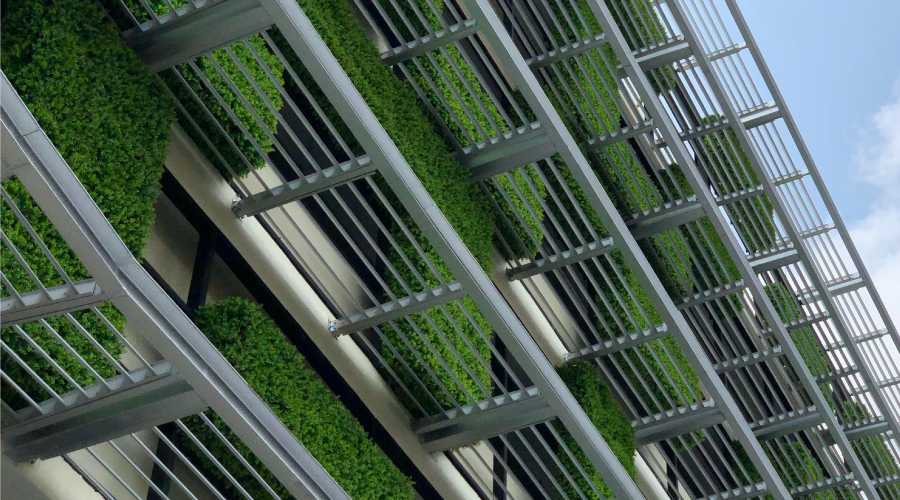Sustainable Construction and High-Performance Workplaces
A final common factor linking the twin sides of high performance — workplaces and buildings — is sustainable construction, which includes issues like recycled content, demountable assemblies, and flexible furniture components. Here is a closer look.
Sustainable Construction
As facility managers and architects think about the organizational elements of a high—performance workplace, they naturally consider the manner in which it is built — that is, construction materials and furniture should also reflect a more innovative way of thinking. Designers are now integrating products that are manufactured with a higher degree of recycled content, and it is not uncommon to see building products reclaimed from other purposes. Salvaged pieces such as barn wood are being showcased as unique design elements and as a way to demonstrate a company’s commitment to sustainability.
Traditional building components such as drywall are also being reconsidered. Some companies are migrating toward the use of demountable wall assemblies to create private, enclosed spaces. The demountable partitions are designed for flexibility and can be easily reconfigured to accommodate a variety of work functions, and many are constructed from a higher degree of recycled content than traditional building products. What’s more, each time these products are reconfigured and redesigned to address a different workplace plan, the reduction of waste back into the environment provides additional sustainability.
Furniture components are also becoming more malleable. To support a high—performance workplace, many furniture manufacturers have developed workstations composed of parts that can be easily adjusted and redesigned to suit different work styles, setting the stage for a truly agile work environment where employees can define their own space. From a sustainability standpoint, workstations today are being manufactured with fewer raw materials. While many companies are still using standard panel—wrapped workstations, a rapidly growing number of businesses have abandoned the typical cubicle in favor of more open benching solutions.
Depending on the company, a “high—performance workplace” can mean many different things. Important common denominators, however, are typically a reduced overall footprint, a greater use of natural lighting, and a more specific emphasis on the use of recycled, easily reusable building and furniture products. In those ways, the high—performance workplace works in perfect harmony with the high—performance building.
Joe Flynn, CFM, LEED AP, is a senior associate and workplace strategist at Margulies Perruzzi Architects. Margulies Perruzzi Architects serves the healthcare, corporate, professional services, research and development, and real estate communities.
Related Topics:













